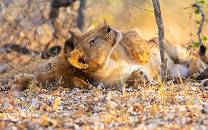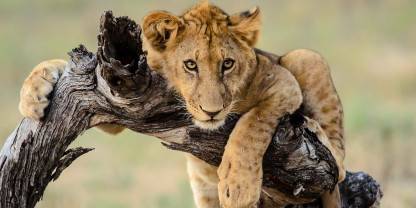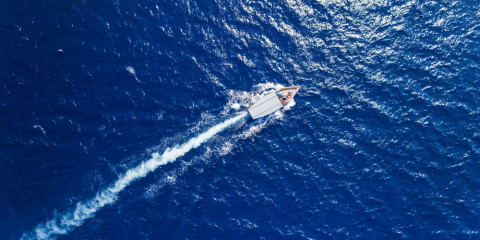Nyerere National Park (formerly Selous Game Reserve) is Tanzania’s largest national park. The lifeblood of this vast wilderness is the mighty Rufiji River and a network of interconnected lakes. The abundant water supports huge numbers of crocodiles and hippos, which you’ll get scarily close to on boat trips, and also attracts plenty of elephants, buffalo and other wildlife. Early morning offer the best chance to see some lion action.

-
Best Time To Go
- June to October (Easiest wildlife viewing)
-
High Season
- June to October (The main tourist area gets crowded)
-
Size
- 30,893km² / 11,928mi²
-
Altitude
-
40-1,317m /131-4,321ft
 View Photos
View Photos
 View Photos
+24
Photos
View Photos
+24
Photos
 Open Map
Open Map
Pros & Cons
- Top wildlife viewing in the Dry season
- and boat safaris are available
- Excellent selection of mid-range and luxury lodges
- Small wildlife-viewing circuit
- Animals are scattered during the Wet season
- The northern section of the park gets busy with day visitors
Wildlife
The variety of wildlife to be seen in Nyerere isn’t quite on a par with Ruaha or Serengeti National Parks, but you’re likely to see big herds of buffalo and elephant. Masai giraffes are very common too. Impalas are abundant and you’ll see lots of greater kudus with their magnificent spiral horns as well. Nyerere is a stronghold for the rare sable antelope and one of the main attractions of the park is the chance to encounter wild dogs.
More about Nyerere NP's wildlifeScenery
Nyerere is an important part of the massive cross-country 155,000km²/60,000mi² Greater Selous-Niassa ecosystem. Its main habitat is dense , but the main wildlife-viewing circuit follows a string of five connected lakes fed by the Rufiji, one of Africa’s great rivers. Its palm-fringed channels attract loads of wildlife in the Dry season and its sandbanks are permanently filled with monstrous crocodiles.
Activities
Nyerere’s unusually diverse range of activities means that it offers arguably the most rounded bush experience of any Tanzanian national park. are rewarding for predator sightings, while boat trips on the Rufiji River and associated lakes offer utterly compelling water-based wildlife viewing. Guided and night drives both add further dimensions to the wilderness experience. If you’re feeling adventurous, you can sleep under the stars on a fly-camping trip.
Weather & Climate
Nyerere experiences almost uniform temperatures throughout the year because of its equatorial location. It is mostly very hot and humid, but the Dry season (June to October) is slightly cooler than the Wet season (November to May).
More about the weather and climateBest Time To Visit
The Dry season (June to October) is the best time to travel to Nyerere. This is when animals converge on the Rufiji River and its associated wetlands, and the dry bush is sparse enough for views of the wildlife to be relatively unobscured. If you do visit in the wetter months, be aware that numerous lodges close their doors from April to May.
More about the best time to visit



